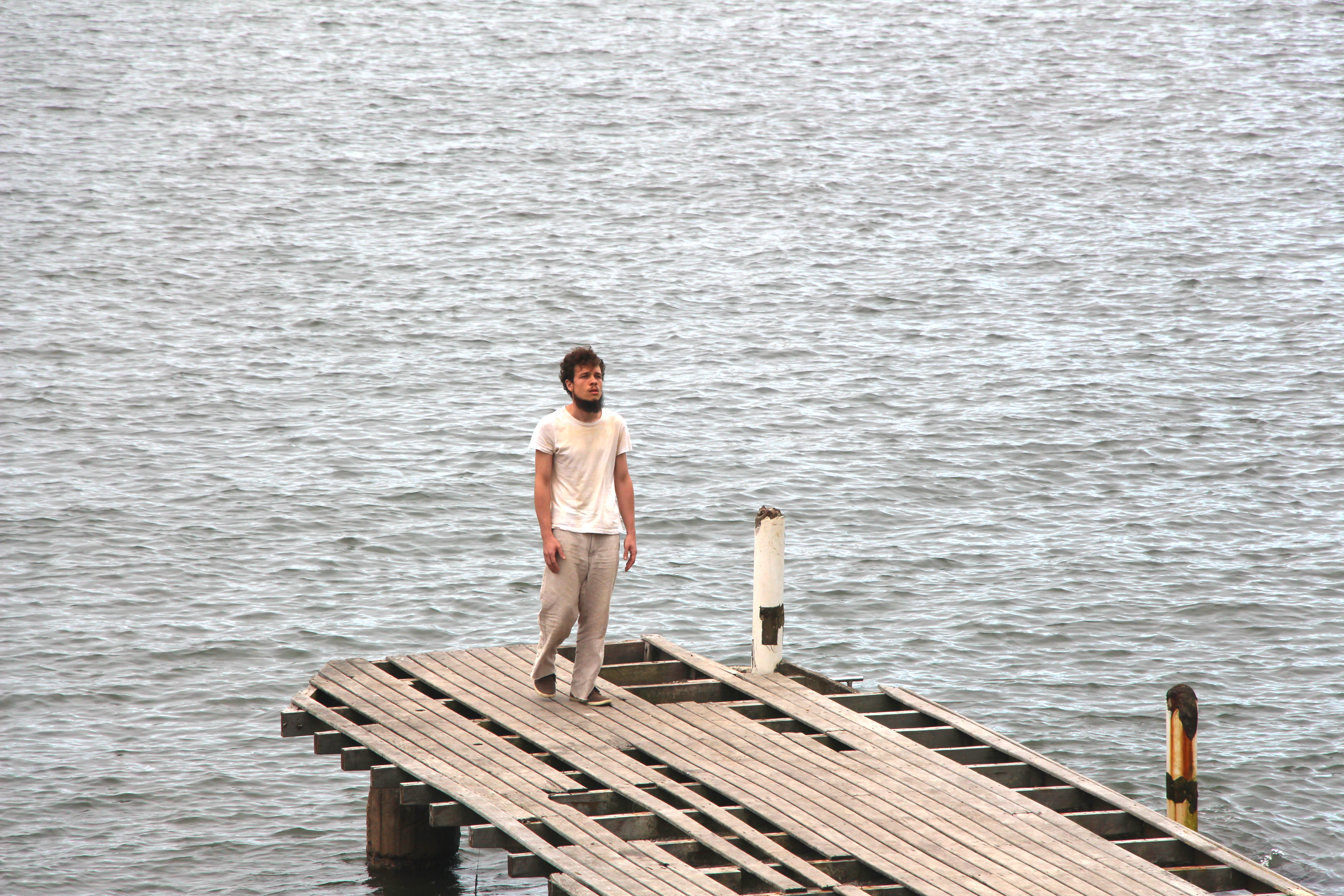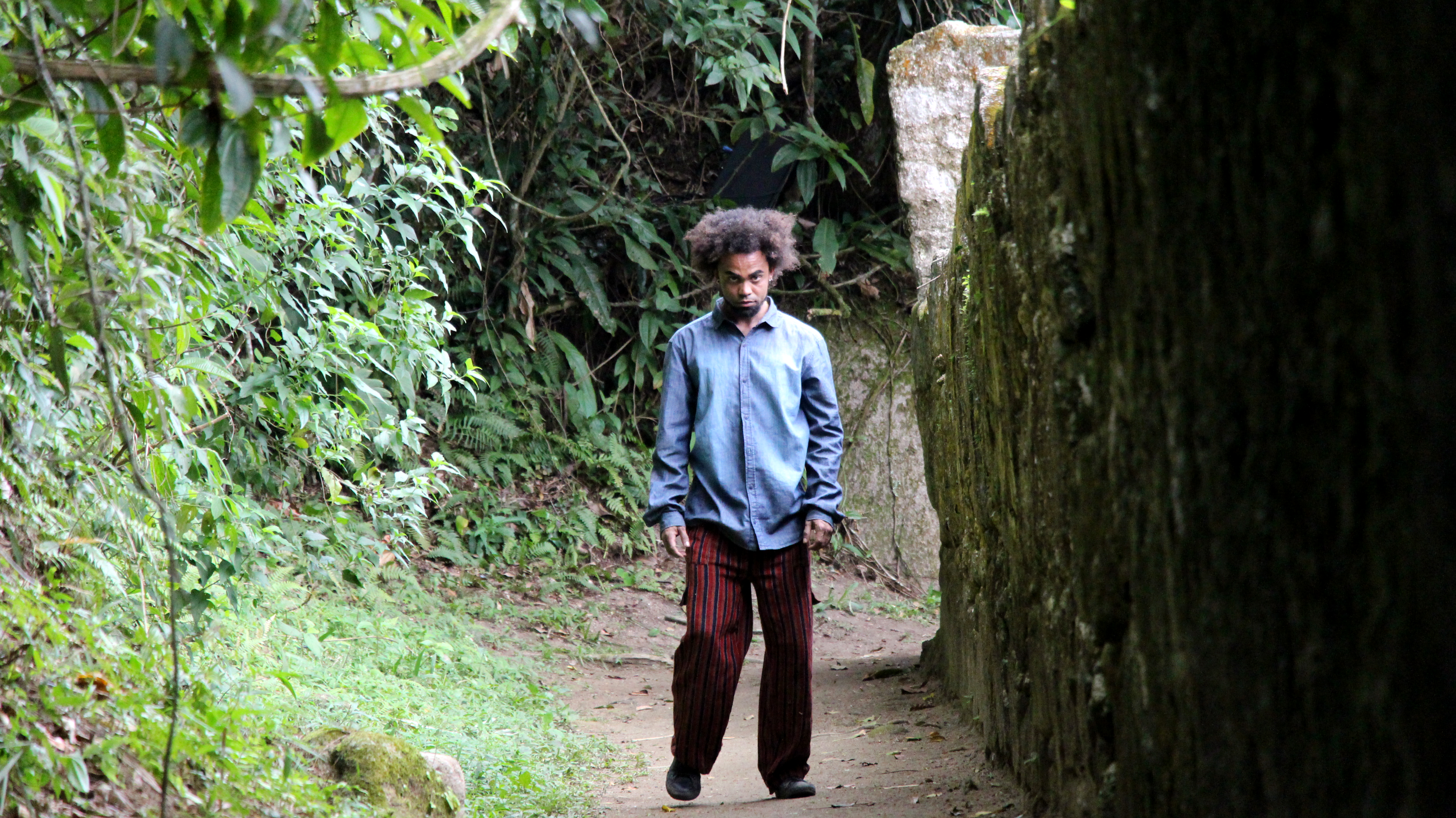Even before stepping out of the boat that has just crossed the ocean towards the Fortress History Museum of Santo Amaro da Barra Grande, in Santos, silence takes over. Under open skies, voices are silenced at the sight of the mountain range, the vastness of the sea, and the faded ruins that hold the city’s history. Bodies silently arranged throughout the landscape announce the spectacle. And the audience of around 50 people is right on cue. As if they were in a tiny theater room, they respond with silent and often breathless expectation.
The Fortress sets the stage for Manufatura de Monólogos, a project conceived to write monologues with artists from the Santos region. Director Luiz Fernando Marques, or Lubi, had already shared the first set of instructions on the boat: the performance would already be live as the boat docked, and whenever one of the actors raised their hands, viewers should check the wristbands they were given before the show and group up with others who had wristbands of the same color. After a brief prelude, the signal is given and five groups are formed. Each of them heads towards the Fortress. From then on, they would each simultaneously watch one monologue after the other... Until all five groups watched the five monologues.

Photo: Marcel Verrumo
Amidst the trees, between branches and ravines, the first monologue begins. On stage, a seminude character seems to struggle with nature around him – at times fighting it, and at times loving it. He is a wanderer stripped of certainties, limits and barriers. In the backdrop, the performance is rocked by a voice that speaks of home and the body. Speaking about how the body is our home and how the home becomes our body – even under a starry-sky roof.
 Photo: Marcel Verrumo
Photo: Marcel Verrumo
Tears are shed in the second monologue. Atop a pile of stones, a black woman asks how great is the burden carried by the tears of a woman of her own race. More than that: she acknowledges her weaknesses and shouts that she, like many other black women, is forbidden from crying – denied by the need to honor the everyday struggle of her ancestors, who also lived among fear and denial, without ever letting their weaknesses overcome them.
As the monologues play out, walking through the Fortress takes the audience to new places, turning the show into an adventure not only through five different stories, but also across the places where much of the city’s historical events actually happened – places whose meaning has been redefined by the scenes that now hold them.
This new meaning is what seems to take the forefront of one of the monologues inside the Fortress itself, in a dark and completely sealed room. In a deafening silence, a man loses himself among tea cups, portraits and memories of his family. He runs around the room, leaps out of the window and climbs on top of the roof, shuffling between photo negatives and suitcases of heirlooms. Memory is brought to the center of the stage without any word ever being uttered – some monologues speak volumes without ever having to say anything.
And then there’s the opposite: the verb as the lead role. A middle-aged man, who grew up under the constant pressure of being the best, seeks to honor the memory of his idols, Oscar Wilde. The audience laughs at the story and the ludicrousness in some memories, which at times seem like the truth, and at other times appears to be the fruit of imagination.
The ending takes place under open skies, where the Fortress towers over the city and where the fifth and last monologue awaits with a naked woman, lying face down atop a stone pile. The story of a scavenger who painted her cart with poems brings about a reflection about exclusion, social violence, and art. The strength of Pagu, a Santos moniker with such prominence throughout Brazil, is exalted and wraps up the series of monologues.
In a performance in which memory is represented in different ways throughout each of the monologues, space seems to be the protagonist of a sixth monologue, narrating the stories of Santos. Ultimately, the Fortress monologue seems to be just like the other five before them: a text that blends together fact and fiction, present and past, art and reality, giving birth to something new and interacting with all of these concepts without being bound by them.
After boarding the boat back to the city, the audience’s silence starts giving way to the first words. The evening is no longer as cloudy and grim as it was when the show began. The sky is open to new possibilities, like the reflections weaved by Manufatura de Monólogos.
Marcel Verrumo, Sesc Online Editor

